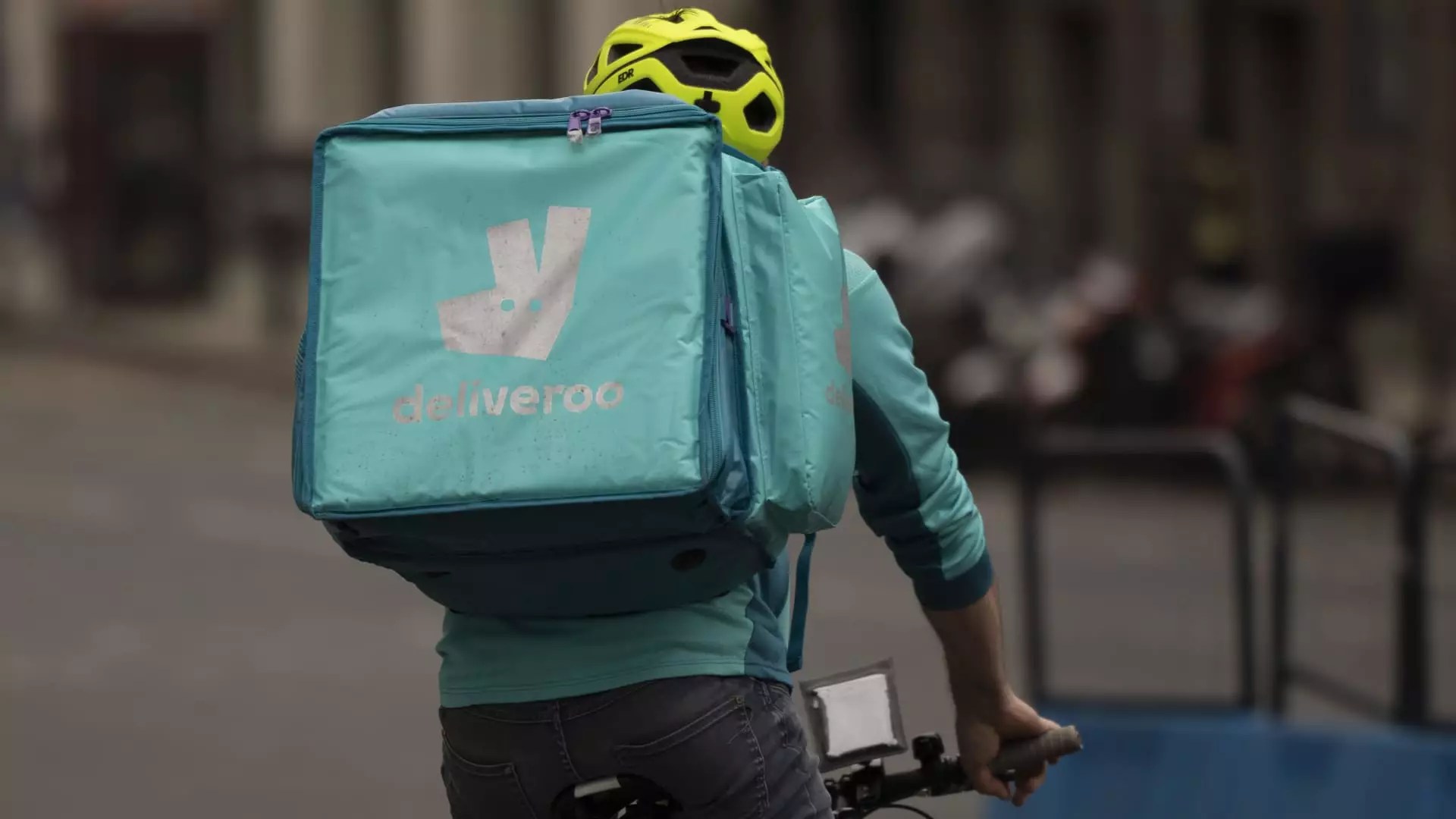In a tantalizing fluctuation of fortunes, British food delivery giant Deliveroo has succumbed to an acquisition bid from American rival DoorDash, valuing it at a staggering £2.9 billion ($3.9 billion). This deal serves as both a lifebuoy for Deliveroo and a mirror reflecting the capricious dynamics of the tech and food delivery industries. Once celebrated as a tech marvel in Britain, Deliveroo’s portfolio has steadily depreciated since its IPO in 2021, plummeting over 50% from its initial price. This tragic narrative is not merely a business saga; it is a clarion call for reevaluation in how we view market sustainability, investor confidence, and the occasionally predatory nature of the acquisition landscape.
Investor Sentiment and Stock Market Volatility
Deliveroo’s share price experienced an ephemeral spike—a mere bright spot in an otherwise bleak timeline. The shares leapt to a three-year high last week, buoyed by the acquisition news, but this does not entirely assuage concerns over past performance. Investors had, until recently, perceived Deliveroo through a highly optimistic lens, a fallacy deeply entrenched in the pandemic-fueled euphoria that often hairstyles reality. Now, as they regroup and reevaluate, many analysts are asking the tough questions: Can DoorDash really manage the logistical complexities that come with this acquisition? The market teaches us that transient highs do not equate to a reformed narrative; the capricious nature of stock prices is something investors must reckon with if they wish to navigate these waters more judiciously in the future.
The Convergence of Giant Rivals
With DoorDash now set to integrate Deliveroo into its operations, one cannot help but ponder whether this merger will indeed create a stronger entity or merely bring about an internal culture clash. DoorDash’s CEO, Tony Xu, expressed his excitement over the potential this merger holds—promising a collaborative effort to enable local businesses across more than 40 countries to grow. However, the reality of corporate mergers is frequently muddied by conflicting priorities, culture shocks, and logistical nightmares. There is a pressing concern among industry watchers that this ambitious plan might fizzle out if the two companies struggle with their identities or operational methodologies. Indeed, the marriage of traditions must not only be romantic but also pragmatic.
Legal Challenges Remain a Troubling Shadow
While DoorDash may see Deliveroo as a golden opportunity, it is vital to remember that this acquisition does not absolve Deliveroo of its legislative challenges or its questionable gig economy practices. The pressure surrounding rider compensation, workplace rights, and weathering the growing scrutiny of gig workers rights remains a looming elephant in the room. Deliveroo’s future will inevitably be shaped by how well it addresses these issues—particularly when observers suspect that societal waves toward greater regulation are far from abating. By effectively tackling these challenges, Deliveroo may redefine its legacy and change the dialogue surrounding gig economy regulations.
The Pact of Consolidation
Deliveroo’s acquisition forms part of an ongoing trend of consolidation within the food delivery sector, a reality reflected in other recent strategic maneuvers, such as Just Eat’s acquisition by an investment group. The industry finds itself at a crossroads, grappling with heightened competition and inherent sustainability issues. This consolidation appears not just economically driven but also strategically motivated—a means of ensuring survival in an intensely competitive market that shows no signs of easing. However, consolidation is a double-edged sword. While it can foster operational efficiencies, it also risks stifling innovation and minimizing consumer choice. As major players increasingly dominate, what will become of the small, independent entities that once thrived in this market?
The Road Ahead: Cautious Optimism
The pathway for both DoorDash and Deliveroo is fraught with challenges but also glimmers of possibility. For investors and stakeholders alike, this acquisition is ironic—a lifeline is both welcomed and viewed with trepidation. The tension between maintaining a competitive edge and squandering the joy of individual economic freedom is palpable. As the industry gravitates toward greater consolidation, the mantra should be clear: we must not lose sight of the entrepreneurial spirit that catalyzed this explosive sector’s growth. Thus, the fusion of these companies might just pave the way for a nuanced narrative about adaptation, resilience, and the intricate interplay between technology and food delivery. The potential for greatness exists, albeit obscured by clouds of uncertainty.


Leave a Reply